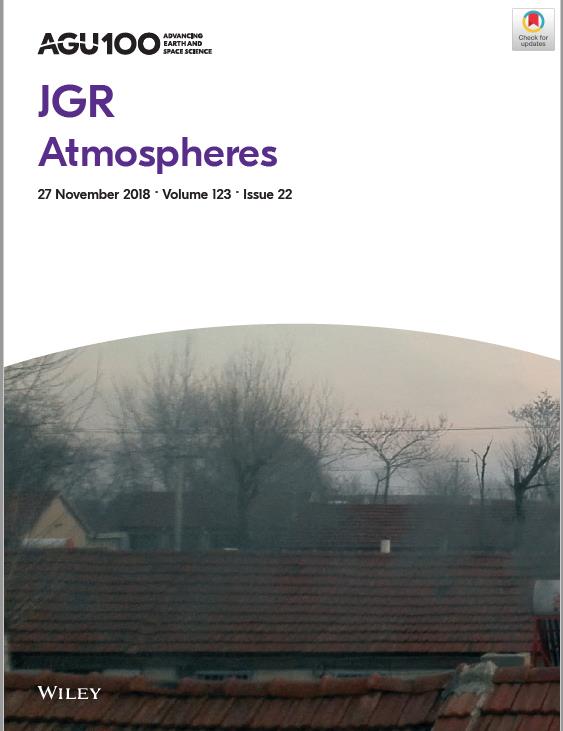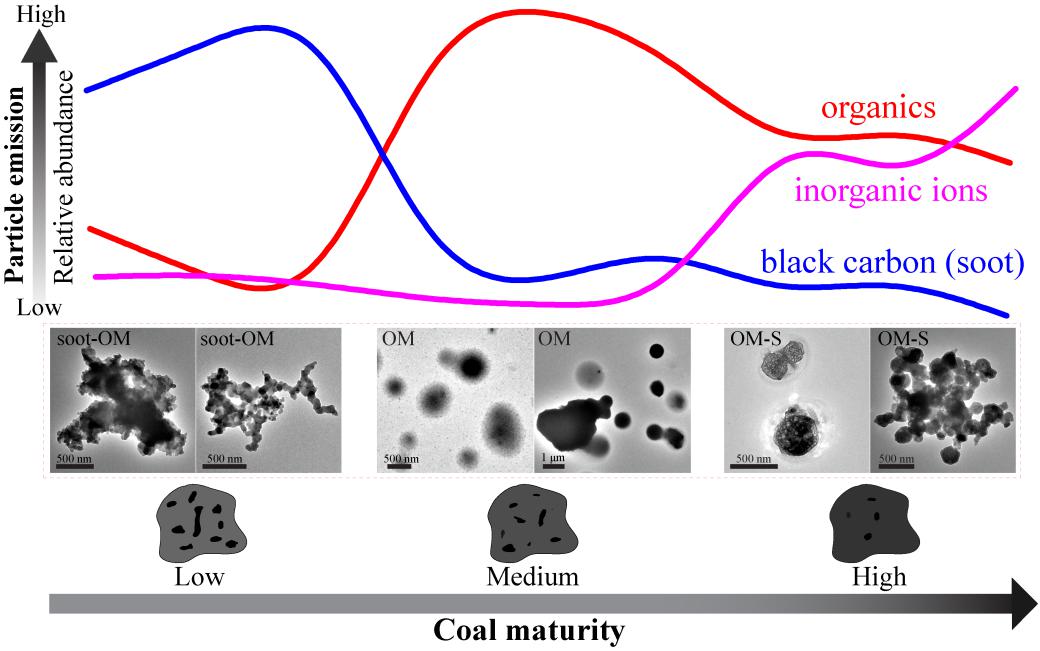Editor: 邵丹蕾 Author: Time: 2018-12-17 Number of visits :399
The new study of Prof. LI Weijun group has been published online by Journal of Geophysical Research:Atmospheres recently, which mainly focused on the morphology, composition and hygroscopicity of fine primary particles from residential coal burning. Due to its high quality, this study was selected as the cover paper of JGR.

Figure 1 The study by Zhang et al. was selected as the cover paper of JGR.
China’s air pollution is very serious in the wintertime, which has deleterious effects on human health and global climate. In rural regions of North China, coal is the dominant fuel for heating and cooking during wintertime. However, compared to industrial boilers, coal in residential stoves is incompletely combusted without any air pollution control devices and emits higher volumes of PM. These features resulted in the contribution of ~35.5% of primary PM2.5 from residential coal burning to all coal consumption in China in 2010, and primary emissions from residential coal burning significantly contribute to the formation of Chinese haze during wintertime. Therefore, it is necessary to study the characteristics of primary particles from residential coal burning. However, to our knowledge, few studies have provide detailed information on morphology, composition, and mixing state of individual primary particles directly derived from coal burning, which is crucial to study their aging and reaction processes in the atmosphere, and then further to clarify the mechanisms of Chinese haze formation in the winter. Therefore, fine primary particles emitted from eight types of coal were collected in the flaming and burn-out stages in a typical residential stove, and were analyzed by individual particle analysis method and bulk sample analysis method.
The study found that low- and medium-maturity coals emitted abundant carbonaceous particles, and high-maturity coals emitted abundant OM-S particles. In addition, soot particles were mainly formed in the flaming stage of low-maturity coals under higher burning temperatures. Therefore, coal maturity and burning temperature both determine particulate properties in coal emissions. Residential coal burning can emit abundant BC and BrC which similar to tar ball, and the effects of these particles on regional climate need further discussion. Sulfates, which are normally considered as secondary formation in wintertime hazes, were also directly emitted from residential coal burning. OM and soot particles from residential coal burning displayed extremely weak hygroscopicity, while inorganic salts within individual particles determined particle hygroscopic growth. Our results suggest that air quality improvements can benefit substantially from the replacement of low- and medium-maturity coals with high-maturity coals, natural gas, or electricity in rural areas.

Figure 2 Schematic diagram showing the impacts of coal maturity on particulate properties in coal emissions during the flaming stage of residential coal burning.
The first author of this study is ZHANG Yinxiao, a master student in Prof. LI Weijun group, and the corresponding author is Prof. LI Weijun. This work was funded by the National Key R&D Program of China, National Natural Science Foundation of China, State Key Laboratory of Atmospheric Boundary Physics and Atmospheric Chemistry, and the Hundred Talents Program in Zhejiang University.
References:
Zhang, Y….Li, W.*et al. (2018). Direct observations of fine primary particles from residential coal burning: Insights into their morphology, composition, and hygroscopicity. Journal of Geophysical Research: Atmospheres, 123, 12,964–12,979.
Paper download: https://doi.org/10.1029/2018JD028988
